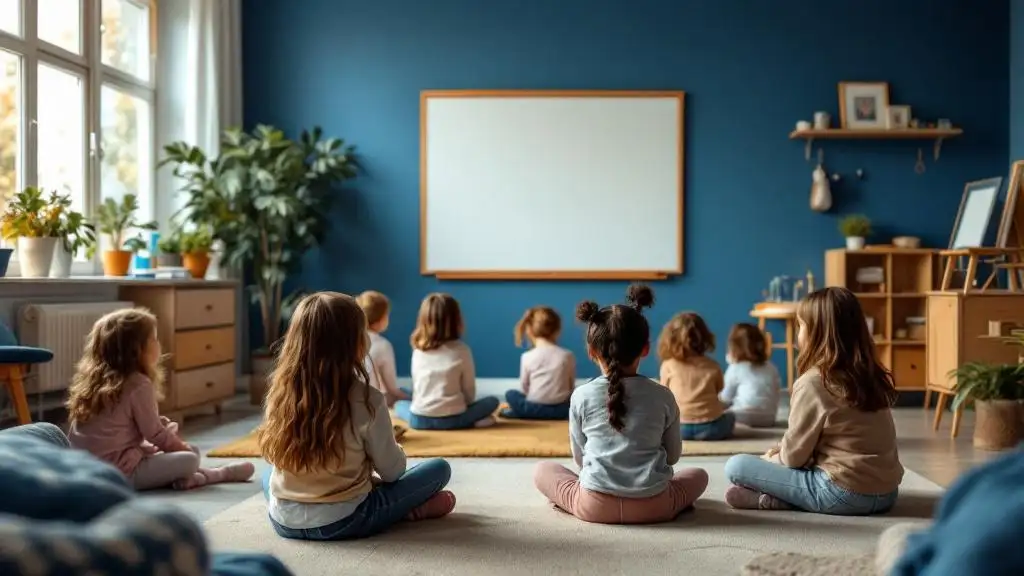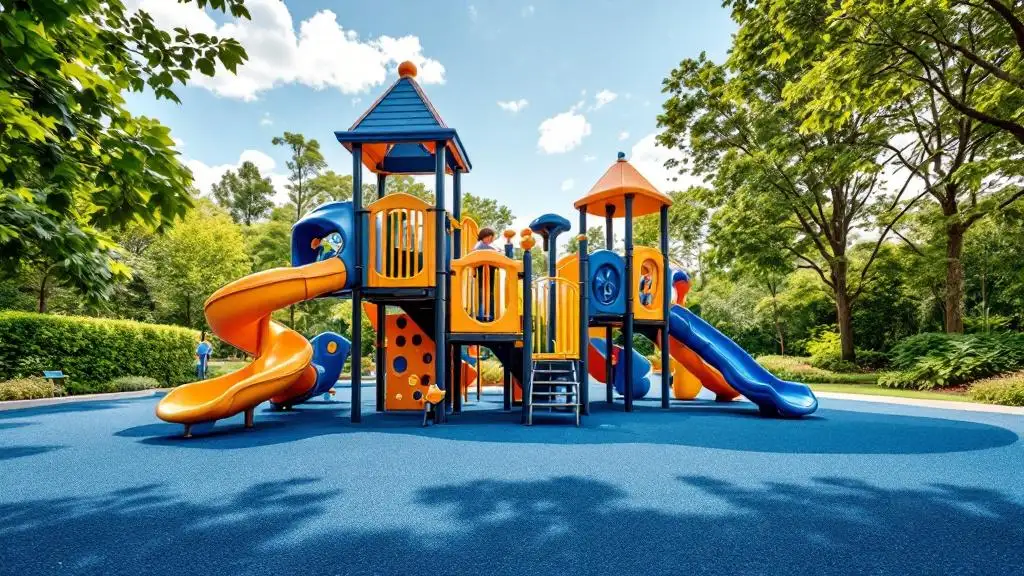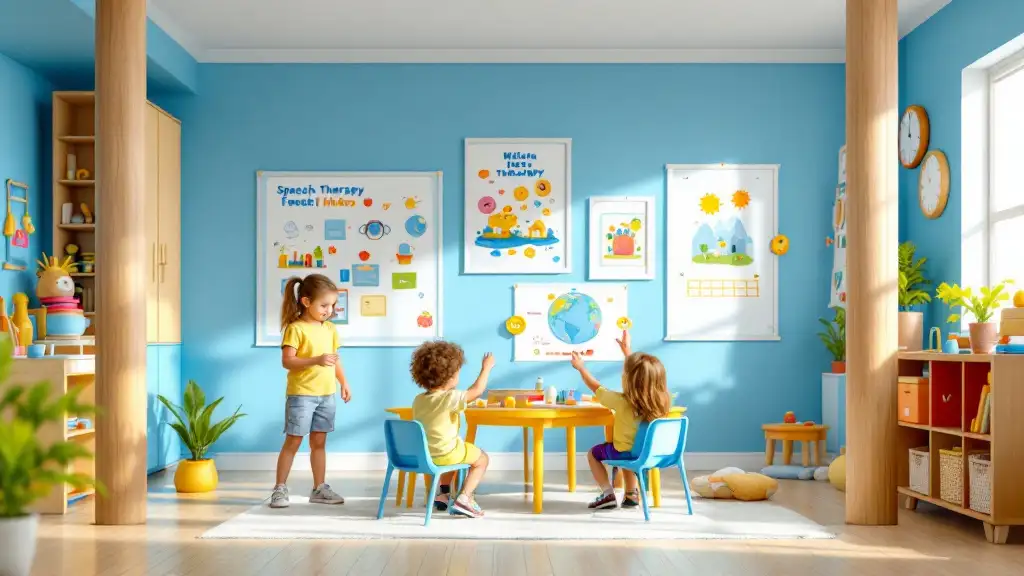
Understanding the Foundations of Expressive Language and the Role of Speech Therapy
Effective communication is vital for social interaction, learning, and emotional development. Speech therapy plays a crucial role in enhancing expressive language skills in children, helping them articulate their thoughts, needs, and feelings more clearly. This article explores what expressive language is, how it develops, signs of delays, and the specific strategies and therapies designed to improve these essential communication skills.
What Is Expressive Language and Its Developmental Milestones

What is expressive language and how does it develop?
Expressive language is the ability to effectively communicate thoughts, needs, and feelings through words, sentences, gestures, and other forms of verbal and non-verbal communication. It plays a crucial role in a child's overall development, influencing social interactions, learning, and self-expression.
Children typically start developing expressive language within their first year. They begin by using gestures and recognizing basic sounds, which serve as the foundation for more complex communication. Around 13 to 18 months, most children start saying their first words.
As they grow, their vocabulary expands rapidly. They progress from simple two-word phrases to more complex sentences that contain four or more words by age three or four. By the age of four to five, children are often able to tell stories, ask and respond to questions, and utilize more sophisticated sentence structures.
Early developmental milestones
Monitoring early milestones helps professionals and parents identify any delays in expressive language development.
| Age Range | Typical Milestones | Additional Observations |
|---|---|---|
| 6-12 Months | Babbling, pointing, responding to name | Recognize familiar words, imitate sounds |
| 1-2 Years | First words, simple phrases, gestures | Vocabulary of about 50 words, basic requests with words |
| 2-3 Years | Combining words, using full sentences | Using pronouns, asking questions, expanding vocabulary |
| 3-4 Years | Telling stories, asking questions, speech clarity improves | Use of grammar becomes more consistent |
| 4-5 Years | Complex sentences, storytelling, conversational skills | Understanding of more abstract concepts |
Importance of monitoring development
Regular assessment of expressive language development allows speech-language pathologists and parents to distinguish between typical progress and possible language delays or disorders.
Early detection of issues facilitates timely intervention, which can include speech therapy, language-rich activities, and parental support strategies. These efforts not only improve communication skills but also boost a child's self-esteem and ability to participate confidently in social and academic settings.
By understanding these milestones and actively engaging in language development activities, caregivers can help nurture expressive language skills and apply appropriate support when delays are observed.
Resources for further information
Use the search query 'Developmental milestones in expressive language for children' to find detailed guides and age-specific expectations that can assist in tracking growth and planning interventions if needed.
Effective Strategies and Activities for Supporting Expressive Language Development

What are effective strategies to support a child's expressive language development?
Supporting a child's ability to express themselves clearly and confidently involves several proven strategies. One foundational approach is modeling correct language; this means repeating and expanding on what the child says. For example, if a child says, "dog run," the therapist or parent might respond, "Yes, the dog is running fast." Such modeling provides a clear example of proper sentence structure and vocabulary.
Another effective method is encouraging open-ended questions. During activities like reading, pretend play, or daily routines, asking questions such as "What do you think will happen next?" or "Can you tell me about your drawing?" invites children to form and articulate their thoughts.
Using visual aids and gestures also supports expressive language. Pictures, symbols, communication boards, and signing help children understand and practice new words, especially those with speech difficulties. Incorporating visual supports makes language learning more accessible and engaging.
Providing opportunities for conversation is crucial. This can be achieved through storytelling, role-playing, and everyday interactions where children are prompted to describe actions, ask questions, and respond. These activities help children organize their thoughts and use language meaningfully.
Creating a language-rich environment at home or in therapy settings involves activities like storytelling, pretend play, and role-playing. Engaging children in these scenarios encourages them to use vocabulary creatively and to practice sentence formation in a relaxed setting.
Finally, setting up activities that simulate real-life experiences, such as cooking or shopping, offers context for language learning. Narrating actions during play or routines enhances vocabulary and helps children understand when and how to use their words effectively.
By combining these strategies in daily routines and structured activities, caregivers and therapists can significantly boost children’s expressive language skills. The goal is to create a supportive setting where children feel confident to communicate and expand their vocabulary.
How Speech Therapy Can Improve Expressive Language Skills in Children
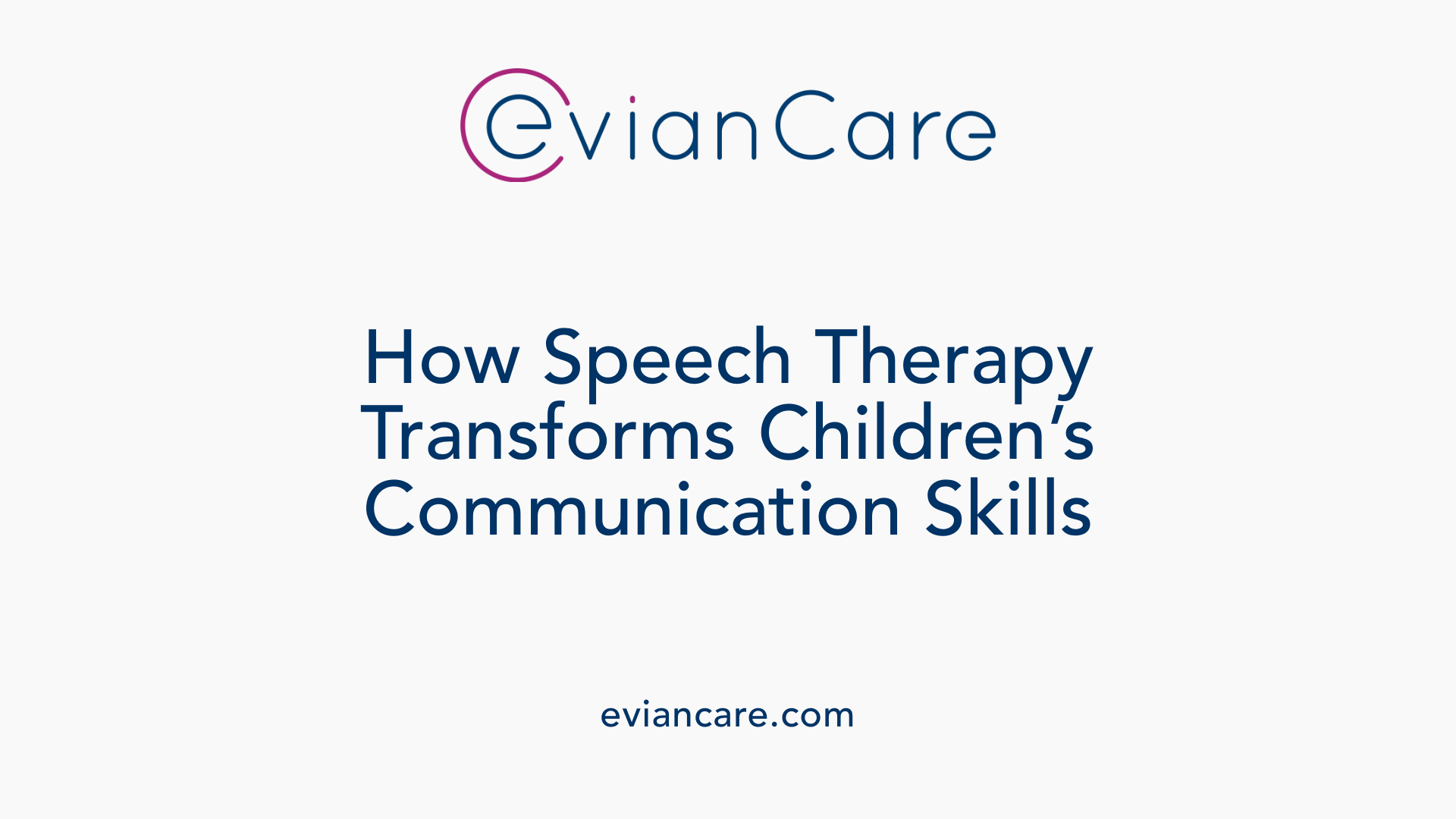
How can speech therapy improve expressive language skills in children?
Speech therapy offers substantial support for children facing challenges with expressive language, allowing them to communicate more effectively. Through personalized therapy plans, children engage in activities tailored to their unique needs, focusing on vocabulary building, grammar, sentence formation, and social language skills.
A common approach includes play-based therapy and storytelling exercises that make learning enjoyable and relatable. For instance, children might participate in role-playing or storytelling to practice structuring thoughts and using descriptive language. These activities foster confidence and enhance the child's ability to express ideas clearly.
Visual supports, such as pictures, symbols, and communication boards, provide additional cues, helping children understand and retrieve words easily. Augmentative and Alternative Communication (AAC) devices are also useful tools, especially for children with severe expressive difficulties.
Early intervention is vital. The sooner therapy begins, the better the chances of developing strong communication skills that support social interactions, academic success, and emotional growth. Speech-language pathologists frequently use methods like modeling correct speech, recasting sentences, and expanding on a child's spoken phrases, encouraging more complex language use.
Overall, the goal of speech therapy is to enable children to use words, phrases, and sentences comfortably—equipping them for better social engagement, learning, and future independence.
Strategies used in therapy
| Strategy | Description | How it helps |
|---|---|---|
| Play-based activities | Using games and imaginative play to encourage communication | Builds motivation; develops natural speech patterns |
| Storytelling and role-play | Children practice structuring narratives and expressing ideas | Improves sequencing, vocabulary, and expressive confidence |
| Visual supports | Pictures, symbols, and communication boards | Aids understanding and word retrieval |
| Use of AAC devices | Speech substitutes such as tablets or communication boards | Provides alternative ways to express needs and desires |
| Modeling and recasts | Imitating correct language forms and expanding child’s speech | Reinforces proper language usage; expands vocabulary |
Additional resources and engaging activities
Parents and educators can further support expressive language development at home and school. Techniques include reading aloud, commenting on daily activities, introducing new phrases, and creating opportunities for children to practice speaking in a relaxed environment. Combining these activities with targeted speech therapy can significantly boost a child's expressive language skills.
Early and consistent intervention plays a crucial role in preventing future social, learning, and emotional issues linked to communication impairments. With the right support and activities, children can improve their ability to share thoughts and feelings, participate fully in social interactions, and succeed academically and socially.
Identifying Signs of Expressive Language Delays and Disorders

What are signs of expressive language delays or disorders?
Recognizing early signs of expressive language difficulties is essential for timely intervention. Children with expressive language delays often display a limited vocabulary, making it hard for them to express their needs and thoughts clearly.
They may struggle to form complete sentences and tend to produce short, simple phrases instead. Grammar challenges, such as incorrect tense usage or omission of function words like 'is' or 'the,' are common. Such children might omit parts of words or sentences, which can make their speech sound incomplete.
Organizing thoughts into coherent stories or explanations can also be problematic. They might find it difficult to answer questions appropriately or tell stories with a logical sequence. Relying heavily on gestures to communicate, especially when verbal skills are limited, is another indicator.
Word-finding difficulties—where a child knows what they want to say but cannot retrieve the words—also point to expressive language issues. Sometimes, this leads to pauses, hesitations, or substituting words with vague terms.
Early signs often emerge between 18 months and 3 years, when children’s speech milestones might be behind schedule. Older children may use simpler words, fewer descriptive details, or less complex sentences compared to their peers.
Monitoring these signs and consulting a speech-language pathologist is crucial. With proper assessment and early speech therapy, children can improve their expressive language skills, enhancing their ability to communicate effectively and confidently in social and academic settings.
Receptive vs. Expressive Language: Understanding the Difference
What is receptive language?
Receptive language refers to the ability to understand and process spoken or written language. It includes skills like following directions, making inferences, and comprehending vocabulary. It also involves understanding gestures, signs, symbols, pictures, and the overall context of conversations or texts.
Children typically develop receptive skills earlier than expressive skills. This means that they often understand more language than they can actively produce. For example, a child might understand what you say but may not yet have the vocabulary or ability to respond or express their own thoughts.
What is expressive language?
Expressive language is the ability to produce and communicate thoughts, feelings, and needs through words, gestures, or other means. This includes using correct grammar, constructing sentences, and effectively conveying messages to others.
Children with expressive language difficulties may struggle with answering questions, telling stories, or finding the right words to express themselves. Importantly, having trouble with expressive language does not mean a child's intelligence is affected; it primarily relates to their ability to use language to communicate.
How do receptive and expressive language relate?
Both types of language are interconnected and vital for effective communication. Receptive language forms the foundation—understanding what others say is essential before a child can respond appropriately.
Improving each skill can also support the development of the other. For instance, reading and talking about stories can enhance receptive understanding, while engaging in storytelling and conversation promotes expressive skills.
Why are these skills important?
Building strong receptive and expressive language skills is crucial for children’s participation in daily activities, social interactions, and academic success. Good language abilities help children develop self-esteem, form relationships, and succeed in school and future careers.
Early identification and intervention of language delays with speech therapy can lead to significant improvements. Tailored therapy plans by speech-language pathologists include activities like listening games, vocabulary exercises, storytelling, and the use of visual aids, all aimed at bolstering these communication skills.
| Aspect | Receptive Language | Expressive Language | Developmental Focus | Influence on Daily Life | |-------------------|-----------------------------------------------------|--------------------------------------------------------|------------------------------------------------------|-------------------------------------------------------| | Definition | Understanding spoken or written language | Producing and conveying language | Comprehension before production | Foundation for following instructions and social interactions | | Developmental Stage | Usually develops first in healthy children | Develops with time after receptive skills | Critical for clear communication and social skills | | Therapy Approaches| Listening activities, visuals, routines | Storytelling, role-playing, visual supports | Enhancing understanding and expression | Essential for effective participation in everyday activities |
By understanding these differences and their importance, parents and educators can better support children’s language development. Speech therapy, including personalized assessments and targeted activities, helps strengthen both receptive and expressive skills, ensuring children can communicate effectively and confidently.
Resources and Activities to Improve Expressive Language Skills
Are there specific activities and resources to improve expressive language?
Yes, there are various targeted activities and resources explicitly designed to boost expressive language skills. These include engaging in naming objects, telling stories, role-playing, and describing scenarios in detail. Visual aids like pictures, symbols, and communication boards play a significant role in helping children practice vocabulary and sentence formation.
Structured programs and exercises tailored to individual needs offer effective ways to develop expressive skills. For example, some therapy resources incorporate multisensory exercises, storytelling, and social skills training to foster expressive language growth.
Official guidance materials and downloadable resources from trusted sites provide comprehensive strategies. An example includes PDFs available on government websites such as assets.gov.ie, which feature detailed activity ideas, assessment tools, and intervention plans. These authoritative sources ensure the activities are evidence-based and suitable for therapeutic or educational use.
Using visual supports and augmentative communication systems like AAC devices helps children with more significant expressive language difficulties. These tools enable alternative ways to practice and showcase expressive abilities.
Home-based activities also play a vital role. Labeling objects around the house, engaging in singing and music-based activities, and encouraging storytelling during daily routines can significantly support expressive language development. Parents and caregivers can create a language-rich environment that nurtures communication skills in fun and meaningful ways.
Understanding the '+1 Rule' and Its Role in Language Development
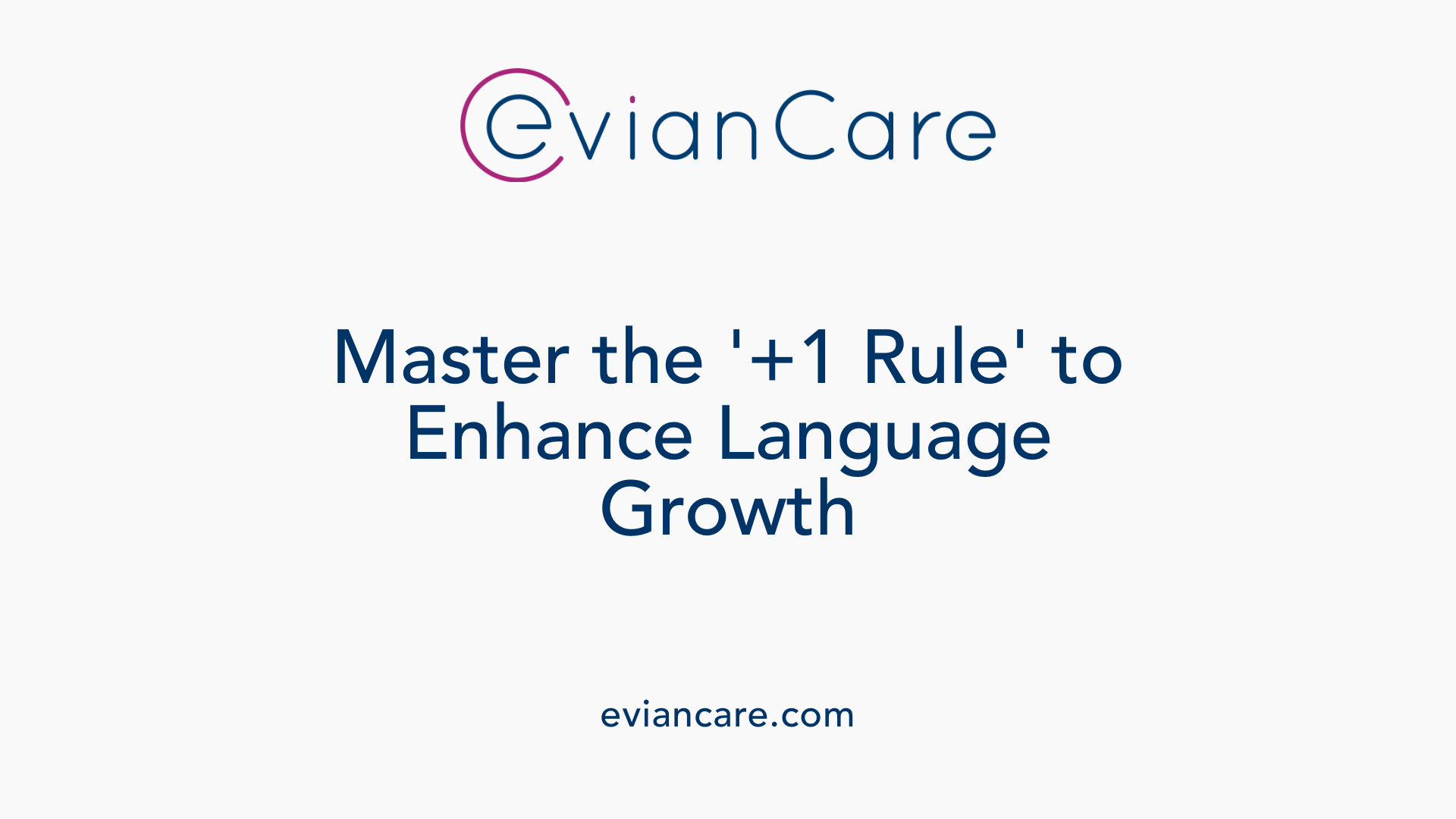
What is the '+1 rule' in speech therapy and how does it help with language development?
The '+1 rule' involves modeling a phrase one word longer than what the child says. This technique encourages children to extend their utterances by practicing longer sentences, which promotes better language skills.
How does the '+1 rule' encourage longer utterances?
By hearing a slightly more advanced version of their own speech, children learn to build upon their current language abilities. This helps them develop more complex sentences, expand their vocabulary, and improve grammar comprehension.
Practical application in therapy
Therapists incorporate the '+1 rule' in various activities, such as during storytelling, conversations, or structured exercises. For example, if a child says "dog run," the therapist might model "the dog runs fast," prompting the child to repeat and extend their phrase.
Additional strategies to support expressive language
In addition to the '+1 rule', techniques like play-based activities, visual supports, and parent coaching are used. These methods create a rich environment where children can practice words, sentences, and grammar.
Impact on overall language skills
Using the '+1 rule' consistently helps children improve their ability to formulate sentences, participate more confidently in conversations, and express their needs more clearly. Early and targeted use of this technique can set a strong foundation for successful communication.
| Strategy Technique | How It Works | Benefit |
|---|---|---|
| '+1 rule' | Models one word longer than child's utterance | Promotes longer, more complex sentences |
| Play-based therapy | Engages children in natural communication | Enhances motivation and learning |
| Visual supports | Uses pictures and symbols to aid expression | Facilitates understanding and speech |
| Parent coaching | Guides parents to support language practice | Reinforces skills at home |
The Importance of Early Intervention and Continued Support
Supporting children’s expressive language development through targeted speech therapy, engaging activities, and parental involvement can lead to significant improvements in communication skills. Early recognition of signs and timely intervention are crucial for success, fostering confidence and enabling children to participate fully in social, educational, and emotional activities. With consistent practice and professional guidance, children can overcome challenges and develop strong, functional expressive language skills that will benefit them throughout their lives.
References
- Expressive vs. Receptive Language - TherapyWorks
- Receptive Language Disorder Strategies to Improve Speech
- Treatments for Expressive Language Disorders in Children
- Expressive Language Delay Resource Page
- Top Strategies for Speech Therapy Expressive Language Skil
- Expressive Language: Enhancing Communication Skills - PedsTeam
- How to Support Your Child's Expressive Language | CCA




